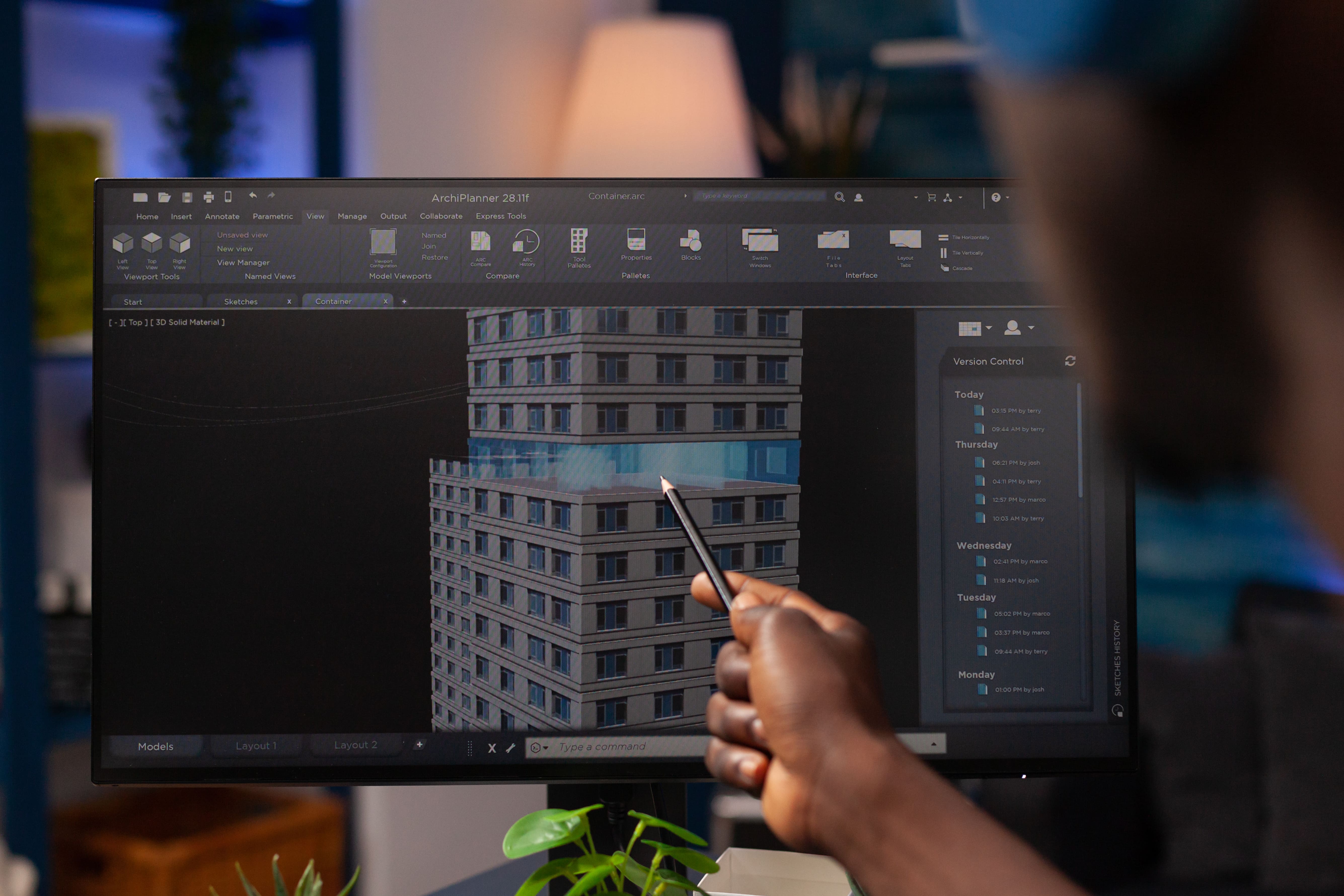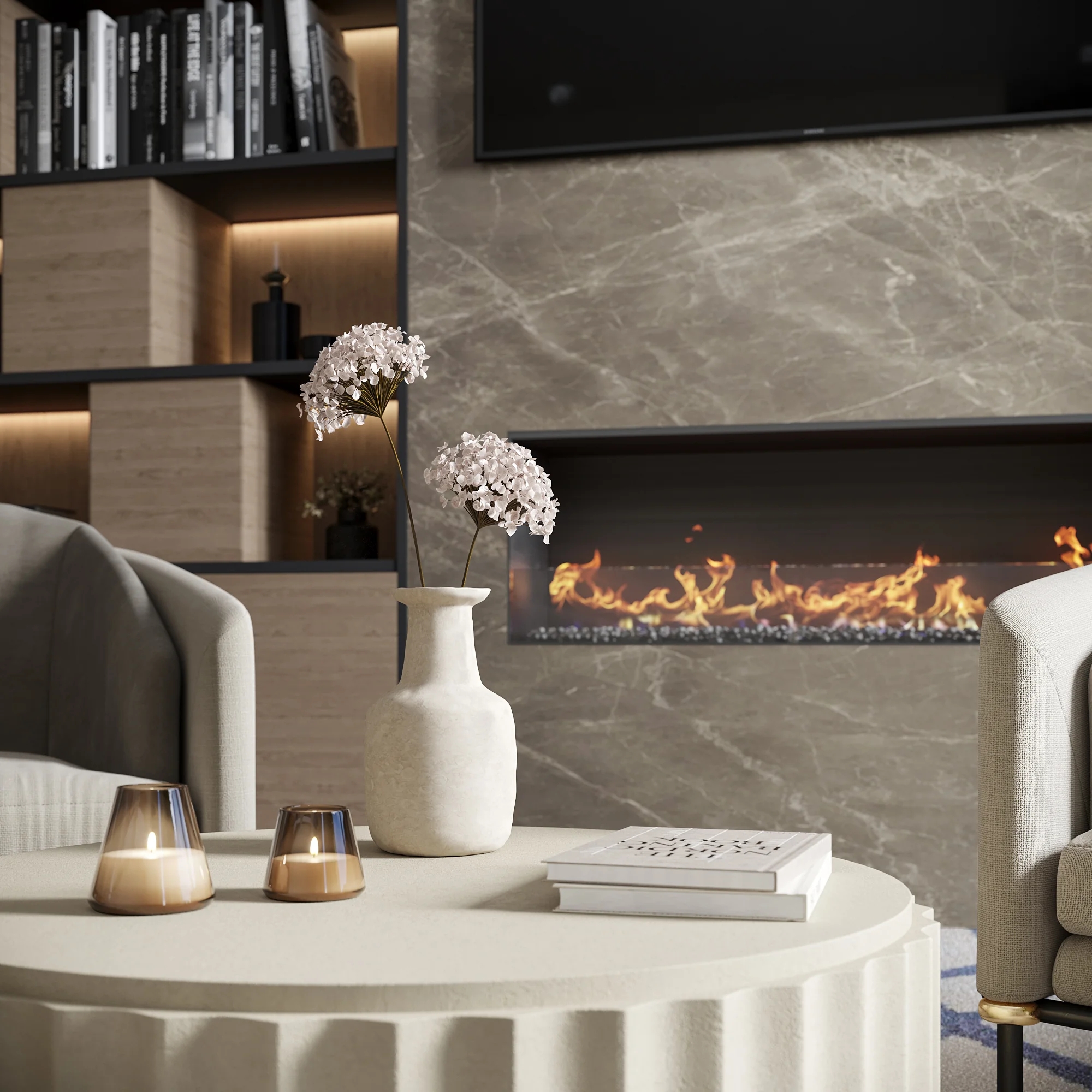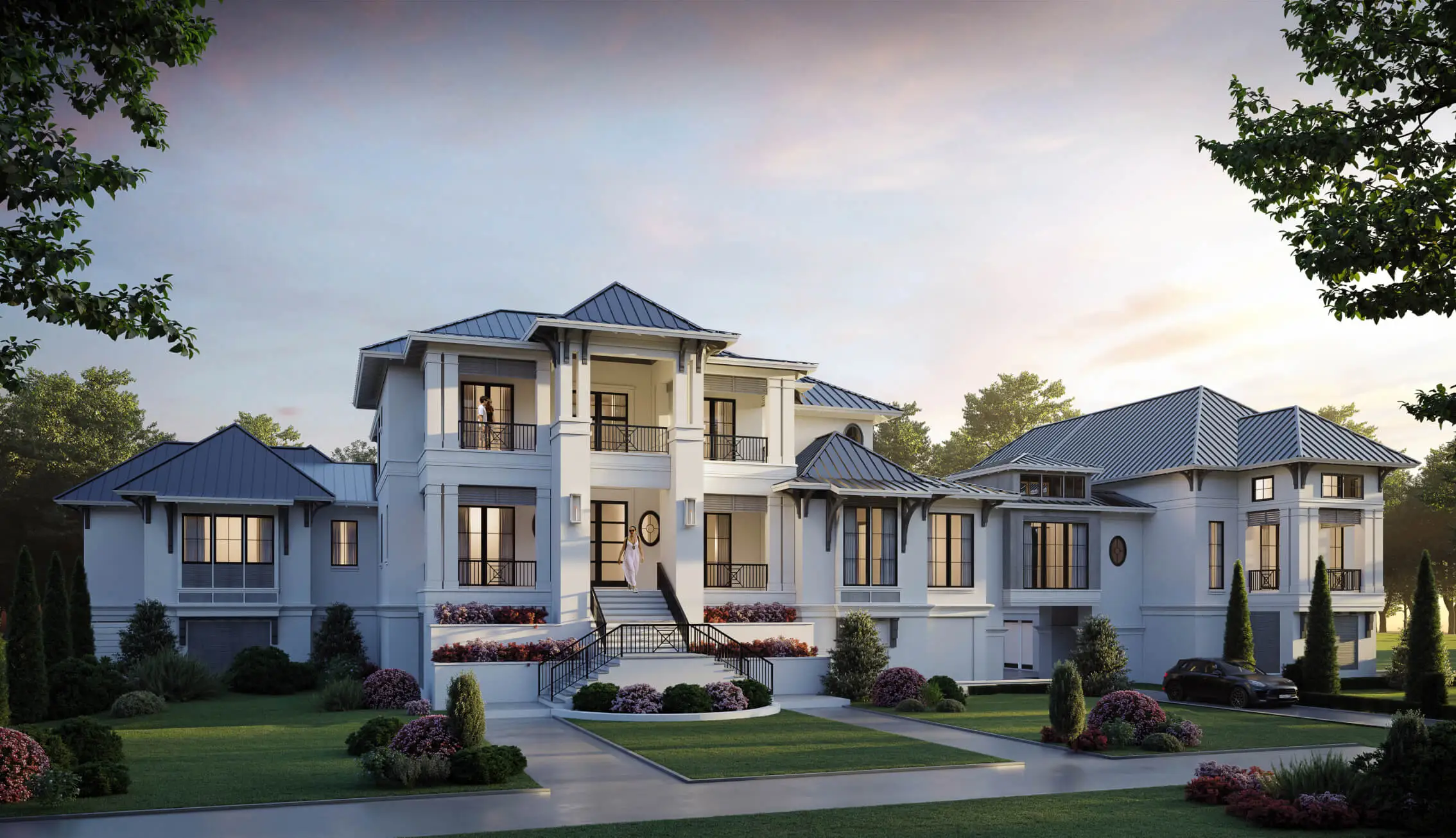Trusted indie architectural visualization firms for small-to-mid-size projects, solo designers, and real estate pros.
Most “best architectural visualization companies” lists showcase agencies’ cinematic work that look great on Behance but often don’t reflect the realities of real projects. Besides, these lists share everything from office locations to international awards but offer almost nothing on approximate project budgets, client feedback, or a company’s approach to clients. Then, upon further research, it often turns out these companies charge $3,000+ per render, and their workflow is too rigid for a small- or mid-sized agency with an average project load.
We’ve worked in the industry long enough to know what design and architectural studios actually need:
- Someone who doesn’t disappear for two weeks
- Someone who asks smart questions and delivers accurate visuals
- Someone whose work supports your sales, not just your mood boards
This list highlights indie 3D architectural visualization companies that understand both creative and technical nuance and fit into real-world design and sales processes. It also happens that many of the teams whose work we praise are located in Eastern Europe, so they can offer budget-friendly rates while delivering premium quality.
Shall we start?
Why companies often look to outsource rendering work
To better understand why architects, interior designers, and real estate agencies reach out to 3D architectural visualization companies for white-lable 3D rendering services, we asked our clients. While we decided to keep their names anonymous (outsourcing is a sensitive lever) we wanted to share a few patterns that we spotted:
- “We’d rather spend on marketing and relationships than on GPUs and licenses.”
For many small/mid studios, investing in realistic 3D renderings means “heavyweight” financial burden such as licensed software for 3D renderings and no-cheap hardware.
- “The backlog spikes during high seasons and you help us clear it fast.”
When work ramps up, distributing tasks to a few 3D architectural visualisation companies is faster than recruiting.
- “Launch months are crazy; other months are quiet.”
On the other hand, some clients work in cycles - high demand during spring-summer, quieter months the rest of the year. Building an internal archviz team that sits idle half the year doesn’t make financial sense. Outsourcing gives them an on-demand production model: 3D architectural renderings when they need them, no sunk cost when they don’t.
- “Stills, animations, 360s - we can’t staff all these marketing assets with one in-house expert”
It’s one thing to produce still images for a design presentation. It’s another to consistently deliver full-service packages when you work in real estate marketing—still, animations, 360° tours, etc. Partnering with affordable 3D architectural visualization companies covers archviz end-to-end.
Conclusion: Outsourcing to archviz partners isn’t about cutting corners. It’s about smart allocation of resources and focusing in-house energy on clients and strategy. Now let’s see who can help with that.
Five best architectural visualization companies to outsource your 3D
Since these hidden gems rarely show up in a simple Google search, we scouted Behance, Instagram, and LinkedIn, did some open-source research, and are ready to share a shortlist for your next project.
This list is based not only on our analysis of studios’ portfolios and services but also on solid voice-of-customer research we conducted. Our selection highlights architectural cgi companies that architects, interior designers, and developers genuinely enjoy working with—the ones who, in our humble opinion, strike the right balance between artistic quality, reliability, and realistic pricing.
We’ll start with Housescape, since we know our own process and strengths best.
1. Housescape

Housescape offers everything from interior and exterior renderings to 3D animation to micro-site development, but what we really shine at, according to our clients, is our workflow maturity and responsiveness.
Think of us as an extension of your in-house crew, but on remote. But, seriously, you won’t even feel it with our regular check-ins, quick feedback cycles, predictable timelines.
We aren’t on a mission to be featured on Dezeen chasing cinematic drama, we are building clarity and trust, and that’s why so many artists come back for repeat projects.
- Pricing: From $199 per interior view and $399 for exteriors, which reasonably puts us in the budget-to-mid range segment among other architectural visualisation firms—but the quality sits comfortably above what that price tag suggests.
- What we’re known for: responsive, hands-on communication; lighting that feels real (not Instagram-fake); vendor-accurate materials; and layouts that mirror your drawings—so expectations match reality once the space is built; check out our 3D rendering portfolio, to see for yourself.
- Why clients stay: well, we make 3D visualization feel easy—which might be the most valuable service of all.
“Nick and his team support us in this by bringing our 3d models to life with their photorealistic finish. They are always responsive and open to feedback from us, and make the process easy and enjoyable. I'd recommend HouseScape to any design professional looking to partner with a great team for visuals.”
Carli Grommet, Owner at CG Studio
VISIO3

VISIO3 is based in Belgrade, Serbia, and we noticed them for their beautifully lit, moody interiors and custom furniture renderings.
They seem to care deeply about visual storytelling, where light, texture, and scale do half the talking.
- Killer service: Their focus seems to lean strongly toward interior spaces and bespoke furniture visualization, where texture quality combined with the proper spatial mood matter a lot.
- Pricing: Mid to upper mid, likely $400–$800+ per image, depending on the level of detailing and number of props/custom models involved.
- Strengths: Material realism, balanced lighting, ability to translate design intent into tactile visuals.
- Best for: Interior designers and furniture brands who want 3D renderings that are grounded in materials and easy to trust because they are true to the original idea.
DAAKO Studio

DAAKO Studio has been in archviz since 2014 and, since that time, they developed their tidy, thoughtful style.
To me, they clearly enjoy storytelling through motion. If you’re trying to sell a place (not just show it) this is where the DAAKO team shines.
- Killer service: animation and short launch films—the kind of mix you need when a project has to live on websites, sales decks, and socials.
- Pricing: Generally mid-range for stills and upper-mid for animation. Ballpark $350–$700 per image; motion depends on length and complexity.
- Strengths: Tight animation craft and a producer’s mindset (they think about the final use, not just the frame).
- Best for: Real-estate and architecture teams who want their visuals to pull double duty—both as a presentation for customers/investors and as a powerful marketing asset.
3DTOUR

3DTOUR sits closer to a technology partner than a classic archviz shop compared to other architectural visualisation firms. Their Clutch profile shows AR/VR Development at ~80% of their service mix (with ~15% Architectural Design and ~5% Custom Software), which matches how they pitch and build projects: VR video, headset-ready experiences, 360°/web tours, and interactive layers—with 3D imagery seeming to a part of the larger experience.
- Killer service: AR/VR tours (web + headset), with add-ons like interactive floor plans, etc.
- Pricing: Typically project-based; Clutch lists min project size $1,000+ and $25–$49/hr band; expect still images to be packaged inside tour deliverables rather than priced per render.
- Strengths: Production + engineering under one roof (marketing collateral and website development, for example); they think about journeys in general, not just visuals.
- Best for: Real estate agencies and marketing experts launching pre-build properties on microsites and who want to integrate them with immersive experience, but don’t want to juggle a separate dev shop plus a CGI rendering vendor.
VIKSEL
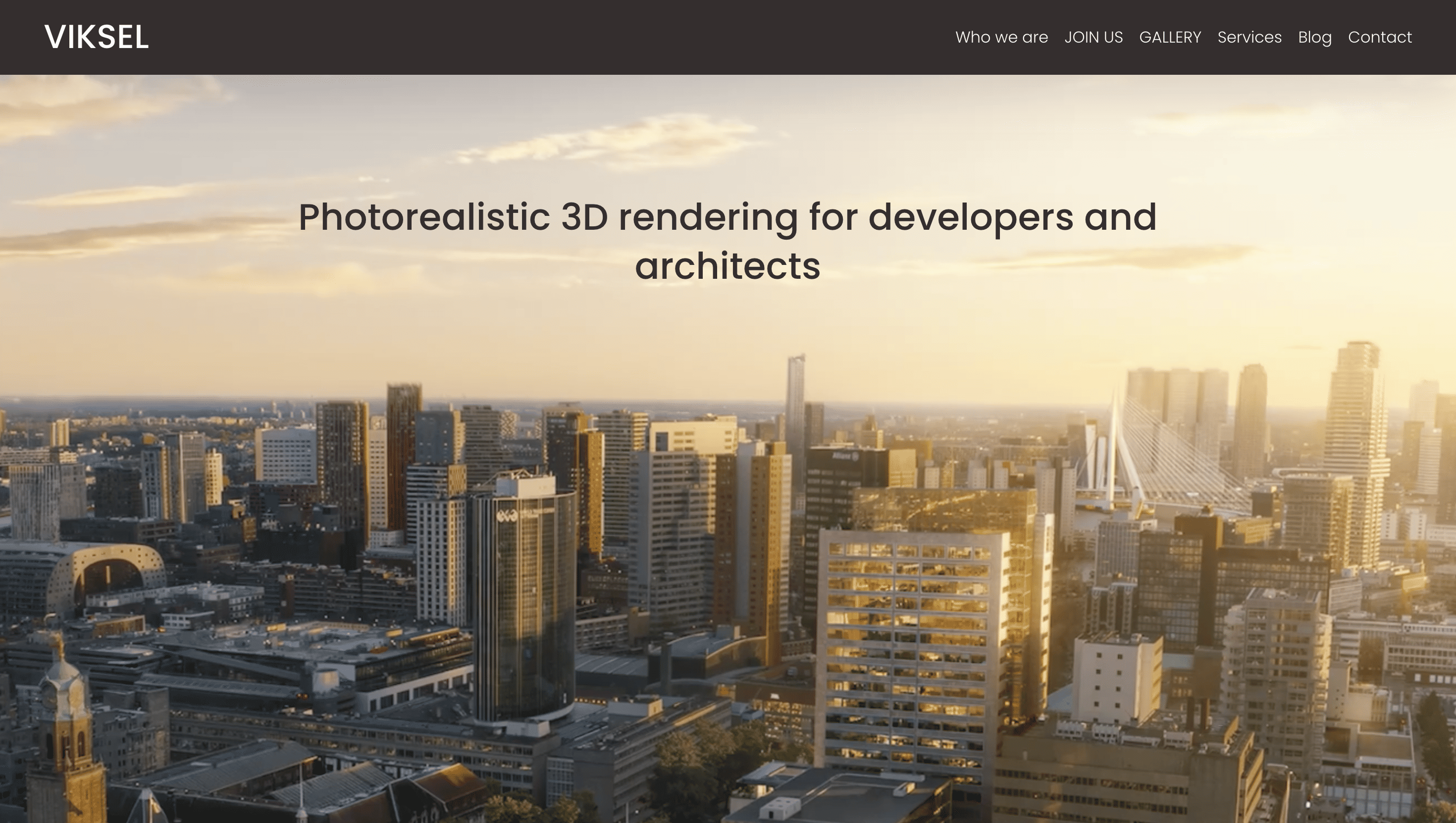
VIKSEL might be based in Ukraine, but they definitely play in the international big leagues. Their client list includes Tétris Design x Build, Compass, and even ENGEL & VÖLKERS—names that don’t usually go shopping for renders on Fiverr. And let's be honest: VIKSEL might be the least “indie” among architectural cgi companies on this list. But they’ve earned their spot.
They specialize in cinematic storytelling, where every image feels like a campaign visual rather than just a technical render. It’s clear they understand how design, light, and marketing intersect.
- Pricing: Based on their client roster, VIKSEL clearly operates in a higher-tier market than a typical indie studio, so expect upper mid to premium prices (custom quotes; likely $600–$1,000+ per image range).
- Known for: Photorealism with art direction and enterprise-level communication.
- Best for: Premium developers, architects, and high-end design firms looking for brand-level visualization.
How to choose the best among 3D architectural visualisation firms
Instead of asking “who’s the best,” ask:
- Can they match my working rhythm?
- Do they communicate like a design partner or a gig worker?
- Do they understand space, light, and materials like a designer would?
- Can I afford them at scale (e.g. for 8–10 images per project)?
At Housescape, we just rolled out bundled packages built for scale. Our 3D architectural rendering studio often handles big projects with tons of deliverables—multiple interior/exterior stills, 3D floor plans, presentations, even animations. Overcharging isn’t our style; we’d rather earn loyalty. Bundles make the budget predictable, reward volume, and keep approvals simple.
Here’s how they look:
.jpg)
However, if you’re interested in per-asset pricing, here’s an easy-to-use calculator where you can explore different services and see how the total changes with asset count and applied discounts. Create your own copy to use it, though.
Trusted indie architectural visualization firms for small-to-mid-size projects, solo designers, and real estate pros.

.jpg)



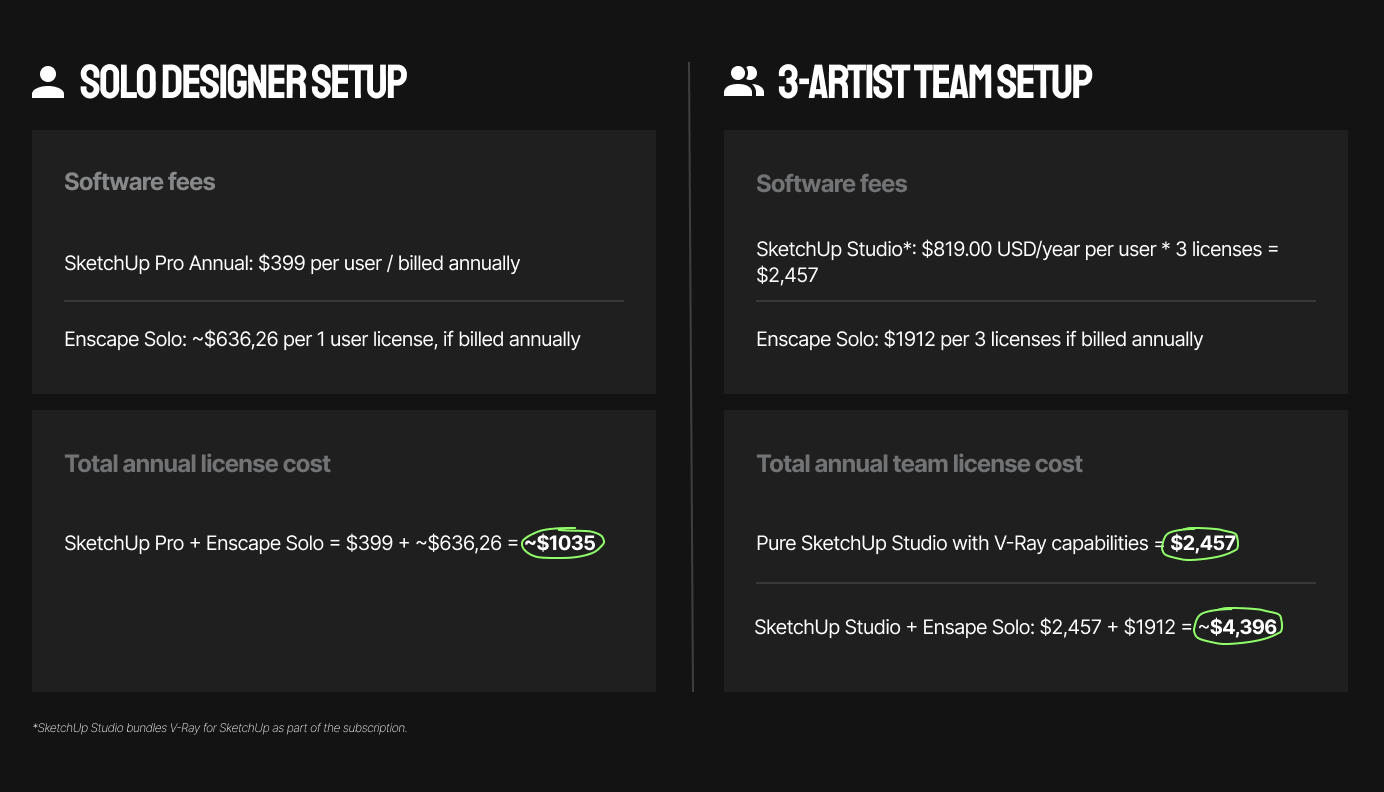

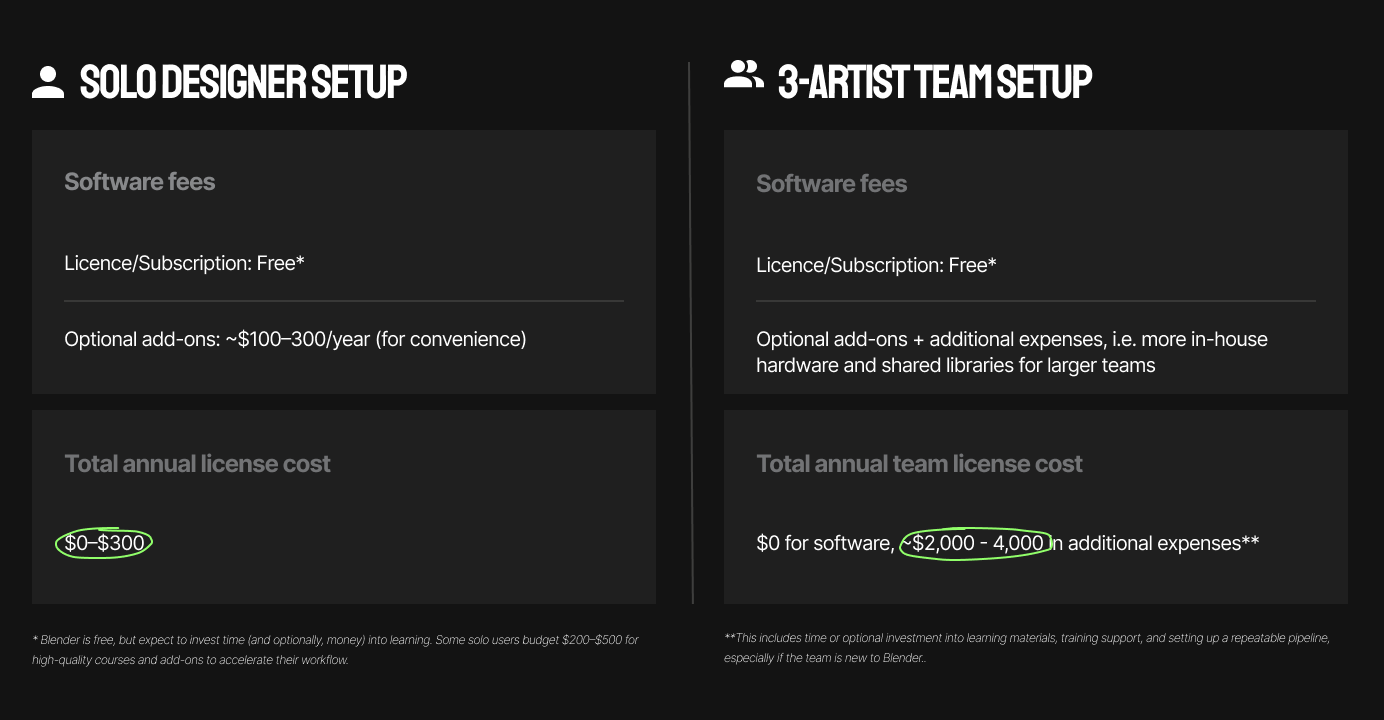
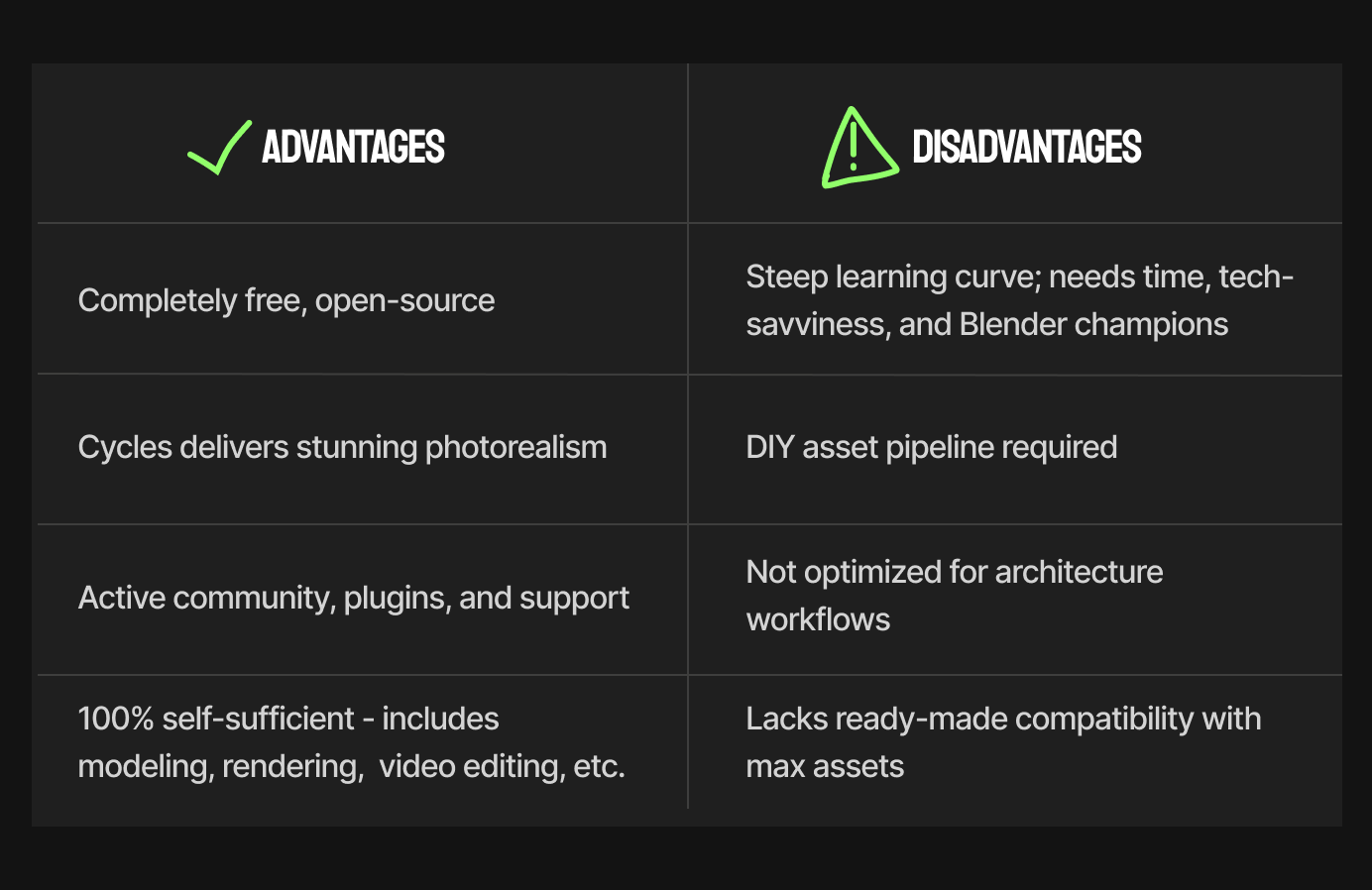
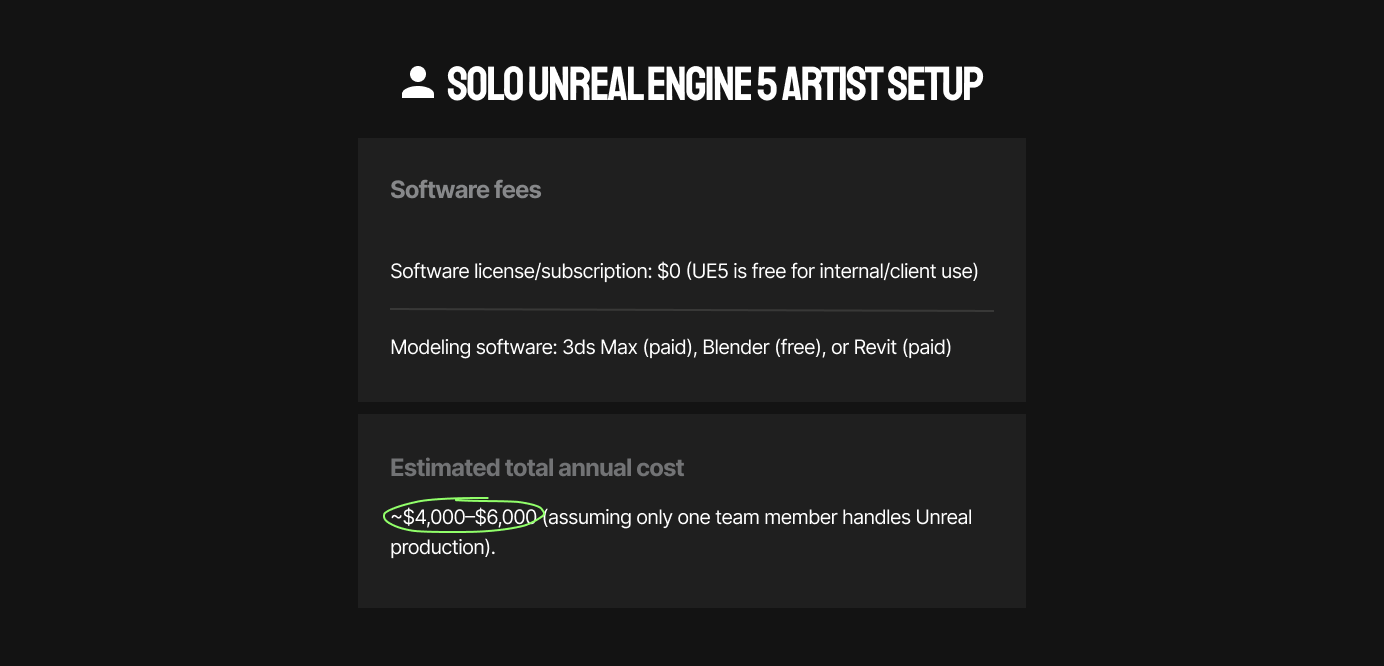

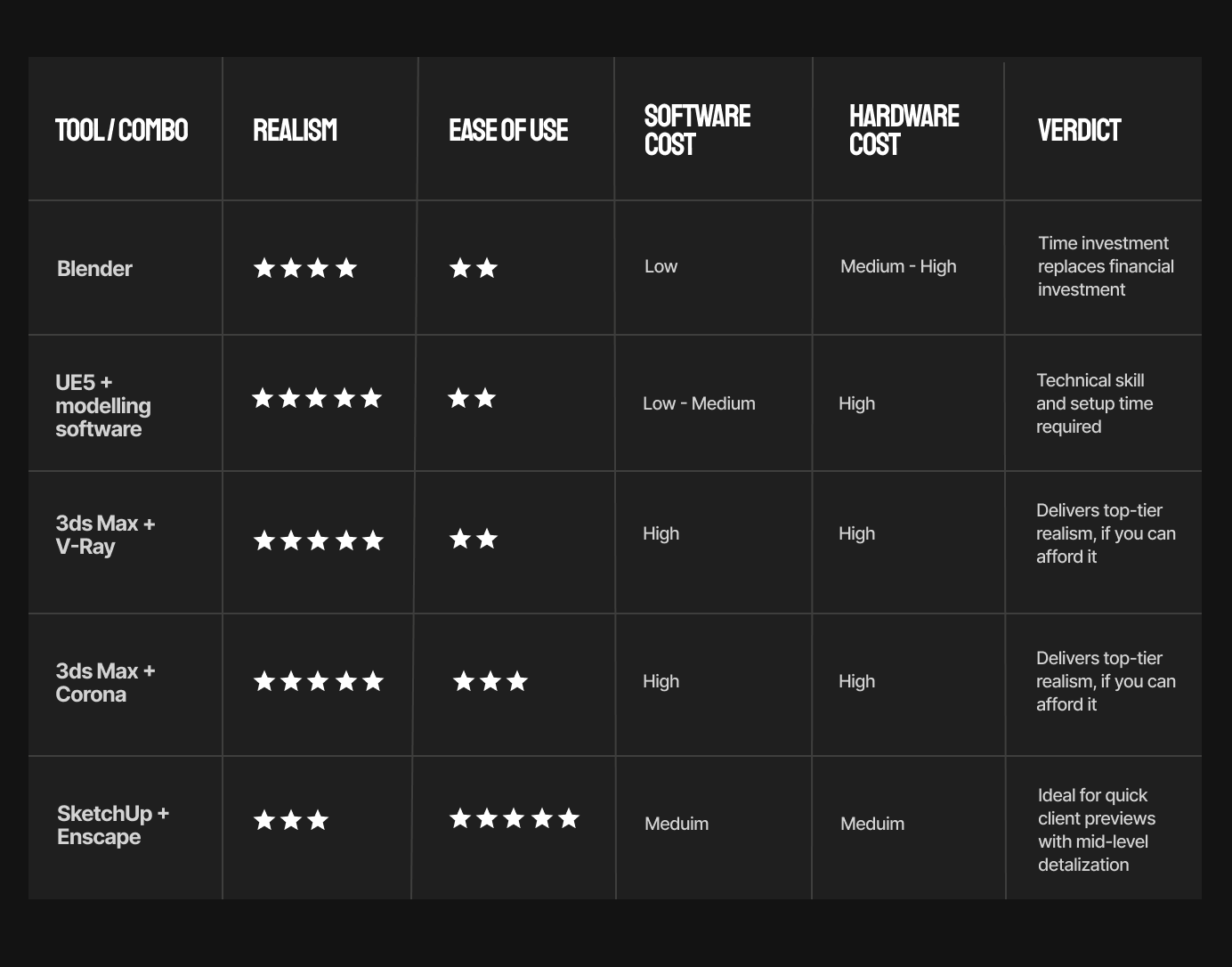

.png)
